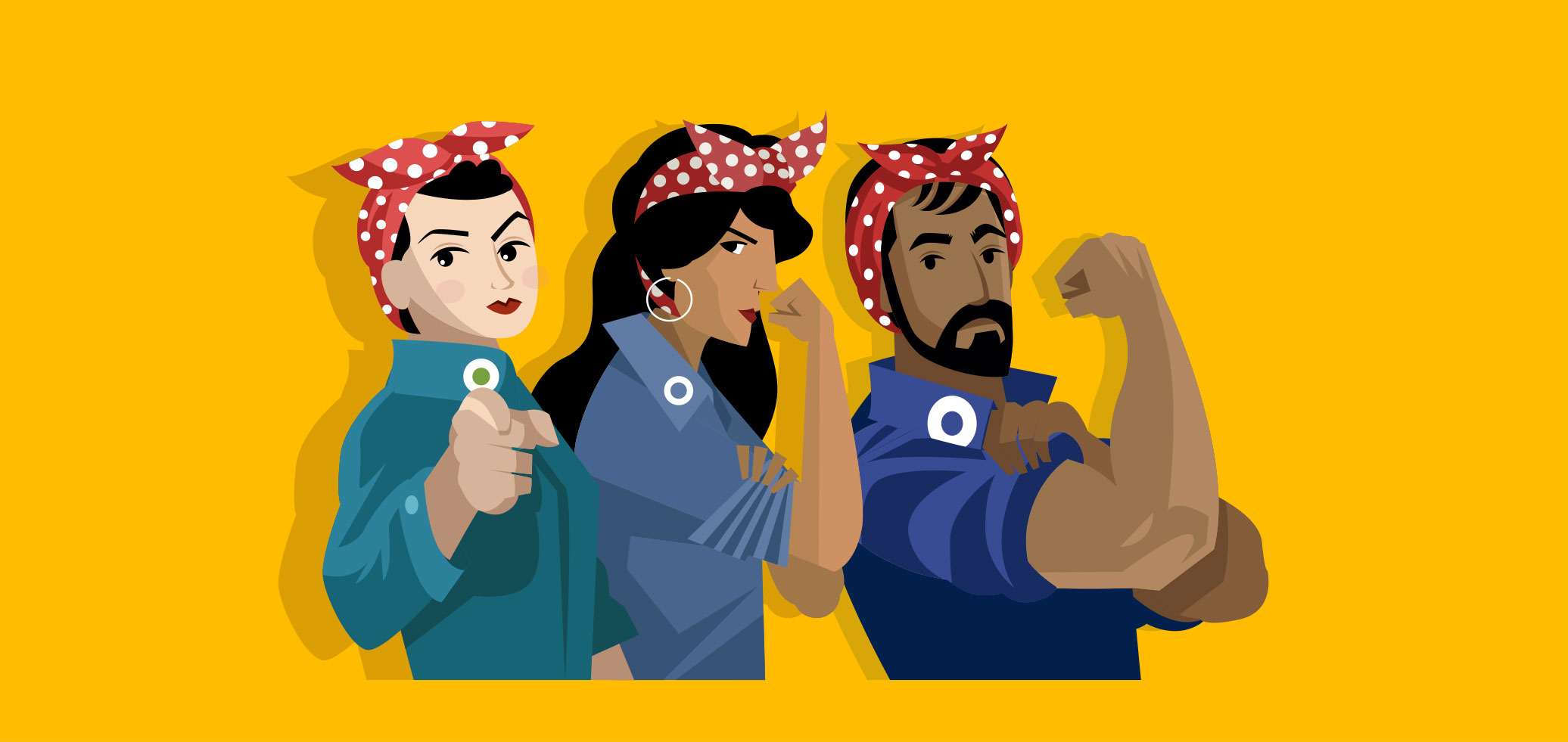First of all, let’s outline the difference between recognition, incentives, and rewards:
- Incentives: Incentives are intended to grab people’s attention and act as a ‘carrot’ to drive action. While there is an obvious overlap with recognition and rewards, incentives are intended to coax individuals to move through the decision-making process so that they take action (activate) and increase participation in corporate giving and volunteering programs.
- Rewards: Once an action is taken, it should be rewarded. While rewards sometimes act as an incentive, inviting people to consider new opportunities and try new things, rewards generally serve to reinforce and affirm existing behaviors. Rewards may also be categorized as employee benefits. For example: a) volunteer paid time off; b) volunteer grants; c) matched giving.
- Recognition: While encompassing both incentives and rewards, recognition primarily refers to the ways in which employee volunteers are acknowledged for their contributions to the community or their individual leadership. Recognition may be used to establish middle management support and increase trust as the program grows.
How do Recognition, Incentives, and Rewards Intersect with Motivation?
Opportunities to give or volunteer compete against other priorities in a person’s life that carry equal or greater value. While an employee may want to give or volunteer, they only take action when the perceived value of prosocial activity is equal to or greater than the value of their competing priorities.
- Global Motivation: A general and relatively stable disposition, not bound by time or contexts. “Yes, I believe in helping.”
- Contextual Motivation: A disposition that may vary based on context. “I believe in helping, but I prefer helping kids over animals.”
- Situational Motivation: A disposition that is highly influenced by time, context, and values. “I believe in helping, I would love to help kids at your non-profit, but I don’t have time this Saturday at 8am.”
To motivate new people to participate for the first time, we need to create “first stage” opportunities with easy access, easy and enjoyable participation, and an easy exit. While it’s important to remove as many barriers to entry as possible, it’s equally important to reassure people that they can leave and never come back without consequence. This allows people to open up to the possibility of connecting emotionally to the experience without being distracted by a fear of commitment.
When it comes to rewarding and recognizing more experienced volunteers, there are nuanced ways to motivate them while simultaneously achieving the program’s desired results. For example, let’s assume we decide to award every employee who serves on a board 1k to donate to the non-profit of their choice. The company’s purpose is to affirm the value of the employee’s time on that board and encourage that behavior across the company. The intrinsic motivator for the employee is the company’s affirmation of their actions.
Additionally, donating philanthropic dollars through employees is a signal that the company wants employees to continue and increase their prosocial behaviors. Giving money away this way is infectious. The more hands the philanthropic dollars pass through, the more people will be infected with the behaviors companies want to see infiltrating its culture.
Note: This type of reward does not incentivize new behavior; rather, it affirms and recognizes existing behavior. You can learn more about why in Dan Pink’s book, Drive, summarized here.
It goes without saying that there is a dollar amount that incents new behavior, but – unless you have unlimited Dollars for Doers budget – it’s not always worth it.
Dollars for Doers current best practices:
- $25/hour
- No minimum hours threshold
- The dollars go into a bank in the workplace giving platform; employees donate it to the non-profit of their choice
Additional best practices:
- Employee Leadership. To avoid the perception that my $20/hour is worthless to the non-profit organization, volunteer leaders are encouraged to remind participants during the brief and debrief that together our gift to this organization is significant. For example, if 20 of us volunteered together, our aggregate donation equals $800, which is a meaningful amount to most non-profits.
- Matching Time with Money. Most workplace giving platforms allow employees to put their donated money into an account which the company will then match up to a certain amount – in either Dollars for Doers or financial giving. This makes a financial donation possible for those who do not have their own funds to donate or who are uncomfortable making financial donations.
- Team Grants. Additionally, many companies use these programs to build stronger team dynamics. Any volunteering done as a team receives an additional group match. This enables the managers to see a value proposition beyond, “it’s the right thing to do.”
- Dynamic Budget. One RW client saw a 17% bump in one month when they decided to start using dynamic budgeting for rewards. They have a basic, static budget and they took a portion of it which was designated as dynamic. The head of the program would choose key times in the year to announce, “For the next two weeks, $50 an hour will be donated to the non-profit of choice to the first thousand people who volunteer for the first time. Make sure you log your hours and take a picture.” Employees loved this and even HR got glowing reviews.
- Pseudo-set Framing. Pseudo-set framing invites participants to finish a ‘set’ of tasks or locate a specific number of items required to complete a set of collectibles. The participant’s motivation to complete a set of tasks or collect a number of items is driven by the desire for completion and it offers feelings of satisfaction associated with accomplishment. Examples include:
-
- Giving Sets: Aligning financial donations to set completion. For example, gifts of $25 could be aligned to a set of tasks, requests, or items as arbitrary sets, rather than as individual units. Instead of simply donating $25 to provide school supplies for one child, the goal could be to buy a set of supplies for 5 children. Alternatively, the employee could be encouraged to find 5 other employees to donate enough money each to complete 10 sets and equip an entire classroom.
- T-Shirt Sets: Instead of randomly receiving a T-shirt at various volunteer events, employees could be encouraged to collect a set of 5 T-shirts for various types of volunteering, giving or fundraising events.
So, how do you decide if your company’s rewards and recognitions are achieving the right outcomes?
Determining whether your programmatic elements are achieving the right outcomes requires a step-by-step analysis – it’s simple, but it takes some time! Reach out to Realized Worth to learn how you can get your E2 score and take proactive steps to make your program as effective as it is efficient.






